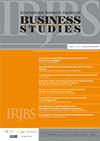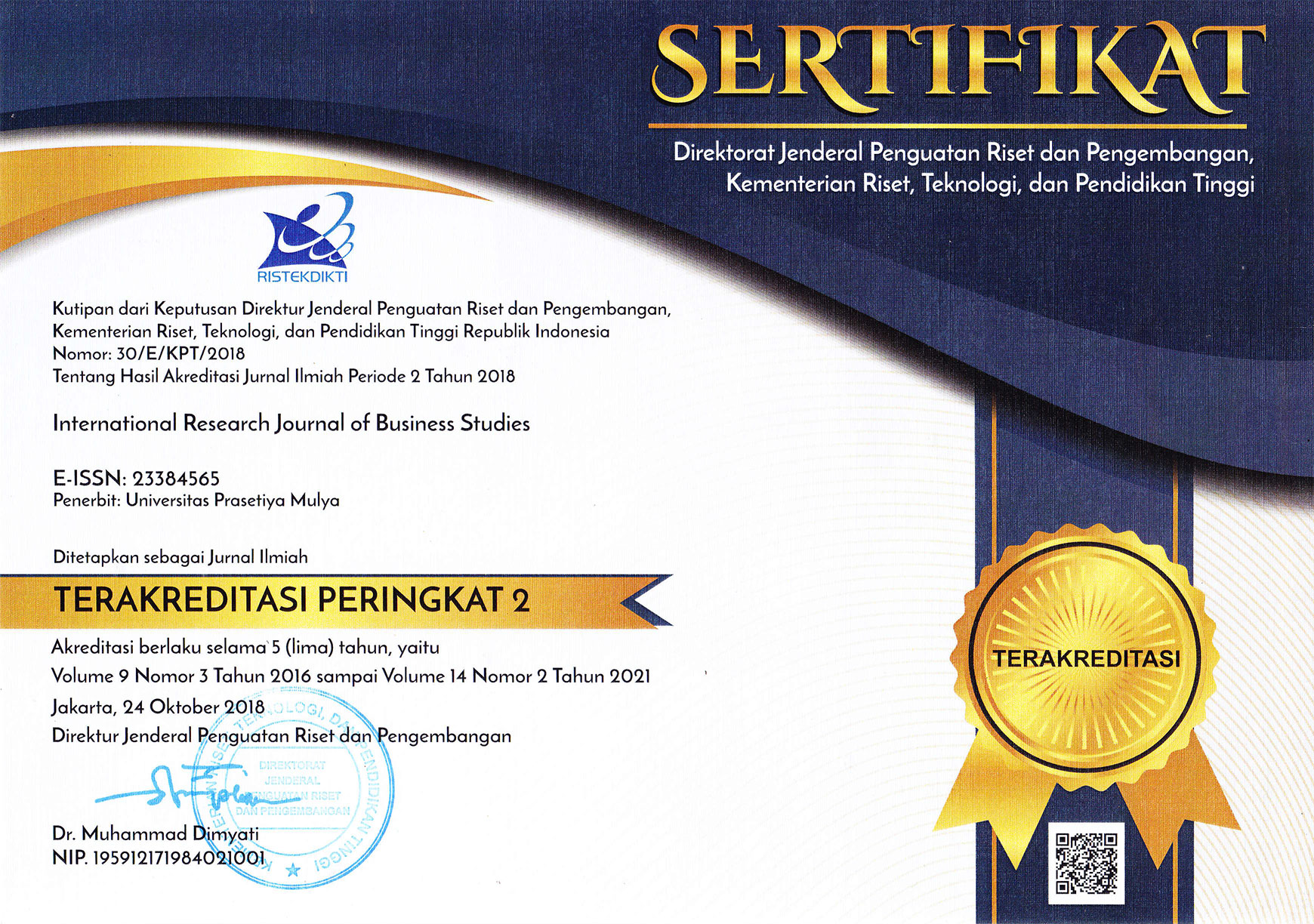Determinants of Exporting Firm in Indonesian Food Processing Sector
DOI:
https://doi.org/10.21632/irjbs.10.1.15-21Keywords:
food processing, export, logitAbstract
Firm size, foreign networks and location has been analyzed as the factors in differentiating between exporting and nonexporting firms. The objective of this study is to analyze factors which made the firms export on the case of food processing sector in Indonesia. The data utilized is the Industry Survey in 2013 by the Statistics Indonesia. The results indicate that foreign networks, represent by foreign shares and imported input, and location are affecting firm to export. Meanwhile from four variables of firm size only one variable has significant effect (production worker expenditure). From these variables it can be inferred that linking with foreign side in the form of share or inputs will induce firm to export.
References
Alvarez, R. (2006). Explaining export success: firm characteristics and spillover effects. World Development, 35, 377-393.
Aristei, D., Castellani, D. & Franco, C. (2013). Firms’ exporting and importing activities: Is there a two-way relationship? Review of World Economy, 149, 55-84.
Bas, M. & Strauss-Kahn, V. (2010). Does importing more inputs raise export? Firm level evidence from france. MPRA Paper No 27315.
Bernard, A. B., & Jensen, J.B. (1999). Exceptional exporter performance: Cause, effect, or both?. Journal of International Economics, 47, 1-25.
Bhavani, T.A., & Tendulkar, S.D. (2001). Determinants of firm-level export performance: a case study of indian textile garments and apparel industry. Journal of International Trade and Economic Development, 10, 65-92.
Blalock, G. & Gertler, P.J. (2004). Learning from exporting revisited in a less developed setting. Journal of Development Economics, 75, 397-416.
Byford, L. and D. Henneberry, 2006. Export Decisions of Food Processing Firms in Kansas, Missouri and Oklahoma. Agribusiness, 12, 247-264.
Central Bank of Indonesia, 2016. Indonesia’s Economic and Financial Statistics. Central Bank of Indonesia.
Javalgi, R. G., White, D.S. & Lee, O. (2000). Firm characteristics influencing export propensity: an empirical investigation by industry type. Journal of Business Research, 47, 217-228.
Lee, J. & Habte-Giorgis, B. (2004). Empirical approach to the sequential relationships between firm strategy, export activity, and performance in u.s. manufacturing firms. International Business Review 13, 101-129.
Majocchi, A., E. Bacchiocchi, E. & Mayrhofer, U. (2005). Firm size, business experience and export intensity in SMEs: a longitudinal approach to complex relationships. International Business Review 14, 719-738.
Pla-Barber, J. & Alegre, J. (2007). analysing the link between export intensity, innovation and firm size in a science-based industry. International Business Review, 16, 275-293.
Rodriguez-Pose, A., Tselios, V., Winkler, D. & Farole, T. (2013). Geography and the determinants of firm exports in Indonesia. World Development, 44, 225-240.
Serra, F., Pointon, J. & Abdou, H. (2012). Factors influencing the propensity to export: a study of uk and portuguese textile firms. International Business Review, 21, 210-224.
Silvente, F. R. (2005). Changing export status and firm performance: evidence from UK small firms. Applied Economics Letters, 12, 567-571.
Sjohlom, F. (2003). Which indonesian firms export? the importance of foreign networks. Papers in Regional Science, 82, 333-350.
United Nations Commodity Trade (UN Comtrade) (2016)
Downloads
Submitted
Published
How to Cite
Issue
Section
License
Copyright (c) 2017 Amzul Rifin

This work is licensed under a Creative Commons Attribution-ShareAlike 4.0 International License.
Journal Author(s) Rights
For IRJBS to publish and disseminate research articles, we need publishing rights (transferred from the author(s) to the publisher). This is determined by a publishing agreement between the Author(s) and IRJBS. This agreement deals with the transfer or license of the copyright of publishing to IRJBS, while Authors still retain significant rights to use and share their own published articles. IRJBS supports the need for authors to share, disseminate and maximize the impact of their research and these rights, in any databases.
As a journal Author, you have rights to many uses of your article, including use by your employing institute or company. These Author rights can be exercised without the need to obtain specific permission. Authors publishing in IRJBS journals have comprehensive rights to use their works for teaching and scholarly purposes without needing to seek permission, including:
- use for classroom teaching by Author or Author's institution and presentation at a meeting or conference and distributing copies to attendees;
- use for internal training by the author's company;
- distribution to colleagues for their research use;
- use in a subsequent compilation of the author's works;
- inclusion in a thesis or dissertation;
- reuse of portions or extracts from the article in other works (with full acknowledgment of the final article);
- preparation of derivative works (other than commercial purposes) (with full acknowledgment of the final article);
- voluntary posting on open websites operated by the author or the author’s institution for scholarly purposes,
(But it should follow the open access license of Creative Common CC-by-SA License).
Authors/Readers/Third Parties can copy and redistribute the material in any medium or format, as well as remix, transform, and build upon the material for any purpose, even commercially. Still, they must give appropriate credit (the name of the creator and attribution parties (authors' detail information), a copyright notice, an open access license notice, a disclaimer notice, and a link to the material), provide a link to the license, and indicate if changes were made (Publisher indicates the modification of the material (if any) and retain an indication of previous modifications.
Authors/Readers/Third Parties can read, print and download, redistribute or republish the article (e.g. display in a repository), translate the article, download for text and data mining purposes, reuse portions or extracts from the article in other works, sell or re-use for commercial purposes, remix, transform, or build upon the material, they must distribute their contributions under the same license as the original Creative Commons Attribution-ShareAlike (CC BY-SA).
This work is licensed under a Creative Commons Attribution-ShareAlike 4.0 International License.








